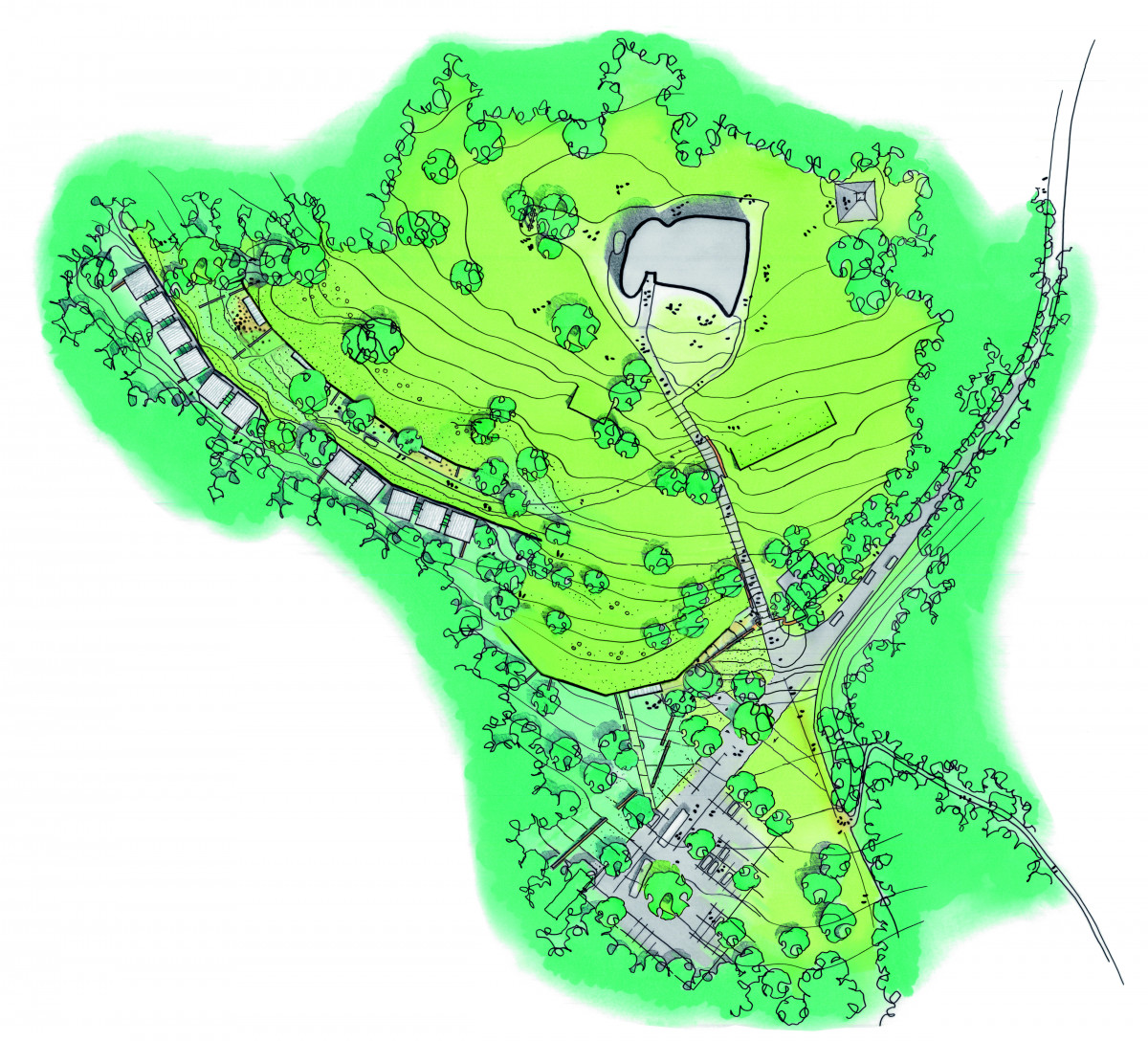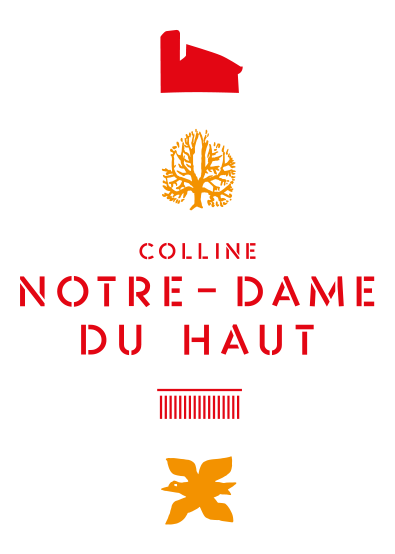


It was commissioned by Ronchamp veterans who wish to commemorate their brothers in arms fallen on the hill in 1944. The stones of the old chapel were used for its construction. This pyramid, reminder of ancient architecture, serves also as a platform from which the faithful can follow the pilgrimage mass. Symbol of peace, the dove upon the small steel pillar was designed by André Maisonnier, Le Corbusier’s assistant responsible for the construction of the chapel.
The Chapel Notre-Dame du Haut, destroyed during the bombings of 1944, rebuilt by Le Corbusier and inaugurated in 1955. Jewel of Modern architecture, this chapel reinvents the traditional sacred space, giving up the cross plan, and in which light plays an important symbolic role.
The Gatehouse is the visitors’ reception of the Colline Notre-Dame du Haut. This building is both a truly multipurpose place and a stopover before entering the site. It includes a ticket office and shop area, but also a resting area and a room for cultural activities (exhibitions, conferences, workshops).
The oratory is the chapel where the sisters gather each day to pray. As in Notre-Dame du Haut, a vault which seems to be floating raises towards the choir to meet zenithal light.
The pilgrim house was intended to house the workers building the chapel. It includes two large dormitories, a refectory, and a kitchen. After the inauguration of the chapel, pilgrims or other groups could sleep here for a few days.
This house was originally built for the site caretaker, who never lived in it. Its name come from the chaplain – the priest appointed to the chapel – who lived in it.
Le Corbusier didn’t want any bells for the chapel, but he imagined an electro-acoustic system which never saw the light of day. In 1975, after Le Corbusier’s death, Jean Prouvé created a steel arch carrying three bells.
Saint Clare’s Monastery is half-buried in the hillside, invisible from Notre-Dame du Haut. It extends along two levels: the bedrooms downstairs, and the areas of community life upstairs (reception, library, workshops, kitchen, oratory). Large bay windows connect the nuns to nature and the outside world. Reinforced concrete is the material of choice to support the weight of the earth, but also to create a link with the work of Le Corbusier.

13 rue de la Chapelle
F-70250 Ronchamp
+33 (0)3 84 20 65 13
Contact
Until Friday 18 April 2025: 10am to 5pm
From Saturday 19 April 2025: 10am to 6pm
From Monday 12 October 2025: 10am to 5pm
Last admission: 30 minutes before closing time. Closed on 25 December and 1 January
For journalists
Connect
Educational resources
To go further
+33 (0)3 84 20 73 26
Contact
Réalisation DN Consultants